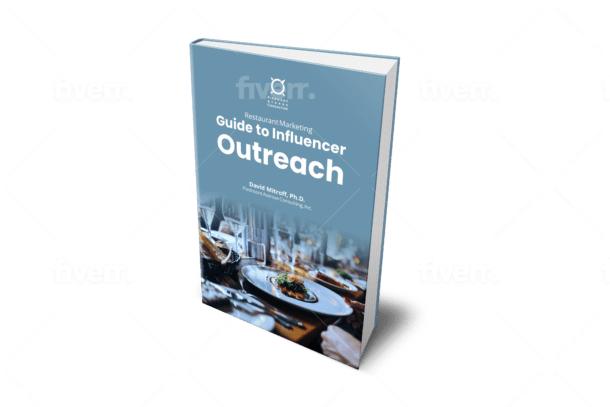An organization’s website is often the first touchpoint for customers engaging with a brand online. An effective web design is essential for creating a positive user experience that fosters engagement and conversion. Several key elements contribute to successful web design.
An effective website promotes user accessibility through intuitive navigation and responsive device design. Visually appealing graphics and branded content establish familiarity and trust. Compelling written and multimedia content provides value to site visitors. Behind-the-scenes technical optimizations boost visibility for relevant searches. Ongoing analysis and user testing drive continual refinements anchored on on-site metrics and audience needs.
Partnering with professional web designers ensures these elements align to communicate brand identity and meet business goals through an exceptional digital presence.
Key Elements of Effective Web Design
Successful web design requires aligning visual, technical, and content elements to create an intuitive, appealing, and conversion-focused user experience. Critical components include:
1. User-Centered Approach
Customer experience is the driving ethos for effective web design. Optimizing site interactions to make navigation intuitive streamlines usability. Responsive design ensures accessibility across various devices and screen sizes visitors may use. Fast site speeds allow quick page loads, providing a smooth feel. Compliance with accessibility guidelines maintains inclusion for diverse audiences.
Clarity and Navigation
An intuitive web interface enhances user interactions through:
- Clear visual hierarchy – Strategic formatting directs attention to important content
- Simplified menus – Concise categorical navigation menus
- Prominent search – Easy to find search bars to enable self-directed information discovery
- Consistent layouts – Predictable content types in consistent screen locations
- Indicative headlines – Descriptive titles summarizing content
Mobile Responsiveness
With growing mobile internet usage on smartphones and tablets, responsive web design adapts sites for optimized viewing across different devices and screens by:
- Flexible layouts – Website layouts automatically adjust without horizontal scrolling or squished content
- Tap targets – Links, buttons, and menus are sized appropriately for touch screens
- Readability – Font sizes and line lengths are set based on context for comfortable reading
- Minimized slowdowns – Optimized image file sizes prevent excessively large files from affecting site speed
Fast Loading Speeds
Quick page load times contribute significantly to positive user experience through:
- Code Optimizations – Clean development code without bulky or unnecessary elements
- Efficient Hosting – Hosting tuned for site traffic needs provides snappy underlying speeds
- Asset Optimization – Compressed image and multimedia files load faster
- Caching – Storing common components for faster retrieval also aids responsiveness
Accessibility
Web accessibility guidelines help create inclusive user experiences through:
- Alt text for images – Descriptive text provides context to assistive technologies
- Video captions – Transcripts aid the hearing impaired and also help SEO
- Color contrast – Sufficient contrast between foreground and backgrounds enables readability
- Keyboard navigation – Ensuring all functions can be accessed without a mouse
- Heading structure – Proper heading hierarchy aids navigation for screen reader users
2. Visual Appeal
Visually striking web design establishes familiarity and effectively reinforces brand identity by applying brand colors, logos, fonts, and other elements. A clear visual hierarchy guides visitors’ attention in order of importance through headlines, images, calls-to-action, and body content. Balancing branded content and consistent layouts with quality photography and graphics engages audiences.
Brand Consistency
Brand reinforcement across digital properties provides familiarity and helps convert visitors through:
- Logo – Primary visual branding element displayed prominently
- Colors – Brand color palette applied to backgrounds, fonts, buttons, and other accents
- Fonts – Typography choices complementary to brand style
- Image Tone – Photography selections consistent with brand messaging
Visual Hierarchy
A strategic visual hierarchy directs attention across page elements via:
- Dominant imagery – Hero banners and featured photos capture the attention
- Prominent headlines – Guide readers with descriptive titles for each content section
- Supporting content – Focused paragraph captions provide context under imagery
- Calls-to-action – Draw attention to actions like newsletter signup, contact forms, etc.
High-Quality Visuals
Compelling photography and vibrant graphics better attract visitor attention and reinforce messaging through:
- Relevant Photos – Images closely align in concept to adjacent content
- Creative graphics – Infographics, illustrations, animations, or icons visualize data
- Consistency – Images maintain consistent filters, cropping, and style
- Optimization – Converting large images to responsive sizes enables fast loads
3. Engaging Content
The highest quality visual design must maintain strong content. Useful written content and complementary media engage visitors and educate them effectively to guide them toward conversion goals. Strategic storytelling principles shape informative content. Search engine optimization also affects formatting to boost visibility.
Compelling Storytelling
Sound storytelling principles guide creative content production:
- Relevant topics – Content directly relates to products, services, and brand
- Narrative framework – Logical positioning and contextual flow maintain reader interest
- Transmedia interplay – Mixed media like video, audio, and graphics diversify storytelling
Clear and Concise Writing
Effective writing ensures content is consumed and retained via:
- Scannable structure – Short paragraphs, bulleted lists, and bolded headings aid quick scanning
- Defining terms– Explain niche terms and acronyms on the first occurrence
- Consistent voice – Maintain brand voice tailored to the audience across sections
- Calls to action– Embed direct links to purchases or conversions within the copy
Calls to Action
Digital marketing relies on clearly defined website goals that guide visitors along the conversion funnel towards targeted outcomes through:
- Email capture – Newsletter signup expands retargeting reach
- Contact forms – Reduce barriers to direct personalized engagement
- Click-to-call buttons – One-touch calls and improved tracking over manual dialing
- Purchase links – Guide buyers seamlessly from product display to transactions
4. Search Engine Optimization (SEO)
There needs to be more than an exceptional website to drive visitors and conversions. Proper on-site and off-site optimization ensures visibility when audiences search for related products, services, and informational topics.
Keyword Research
Keyword analysis uncovers topics users search for to shape content that ranks well organically:
- Industry terms– Technical vocabulary frequently searched
- Question analysis– Review common inquiries for helpful responses
- Competitor comparisons– Benchmarks guide areas needing content improvement
Technical SEO
On-site enhancements drive visibility by assisting search engine crawlers to correctly interpret and index pages:
- Descriptive page titles– Pages prominently feature primary keywords
- Metadata optimization– Page descriptions and structured data guide indexing
- Alt-text and anchor links– Provide context to non-text page elements
Fresh Frequent Content
Ongoing content expansion keeps pace with evolving user interests and trends:
- Blog content– Posts on trending topics drive recurring engagement
- Multimedia assets– Interactive content types increase sharing and links
- Link building– Credible external references signal expertise to search algorithms
5. User Testing and Analytics
Understanding how visitors utilize a website provides the foundation for data-driven design choices, balancing aesthetics and conversion performance indicators. Both qualitative user feedback and quantitative data shape balanced design decisions.
Gather Feedback
Visitor surveys, user testing sessions, and support calls uncover usability pain points:
- Task testing – Observe volunteers navigating key site functions
- Support calls – Heavily documented cases indicate complex site areas
- Feedback forms – Direct comment submission on specific site pages
Data-Driven Decisions
Web analytics provide user trend visibility to pinpoint effective yet underutilized pathways ripe for additional push. Common diagnostics revealing optimization opportunities include:
- Bounce rates – Single-page visits signal content or navigation issues
- Click depth – Reviewing visitor journey beyond the home page
- Exit pages – Resources visitors leave from providing redesign focus areas
- Referral sources – Review traffic sources and topics driving conversions
Partnering with Experienced Web Design Professionals
Aligning the interconnected elements contributing to effective web design requires an integrated blend of creative skill and analytical acumen across visual design, content creation, and technical development. An experienced web design partner intimately understands the nuances across these disciplines to craft cohesive digital experiences centered on meeting unique business objectives. They apply research-backed best practices tailored to audiences while proactively optimizing to balance aesthetics, conversion, and ROI.








